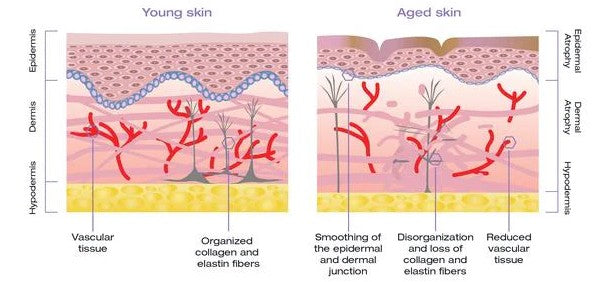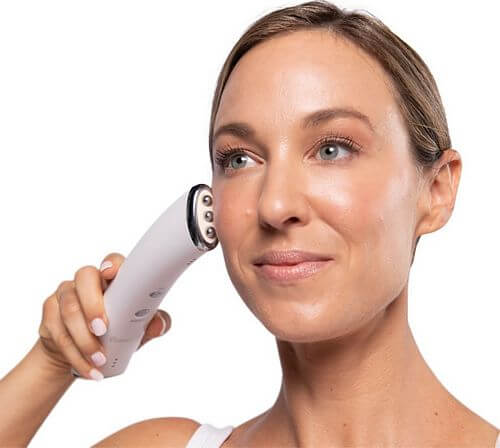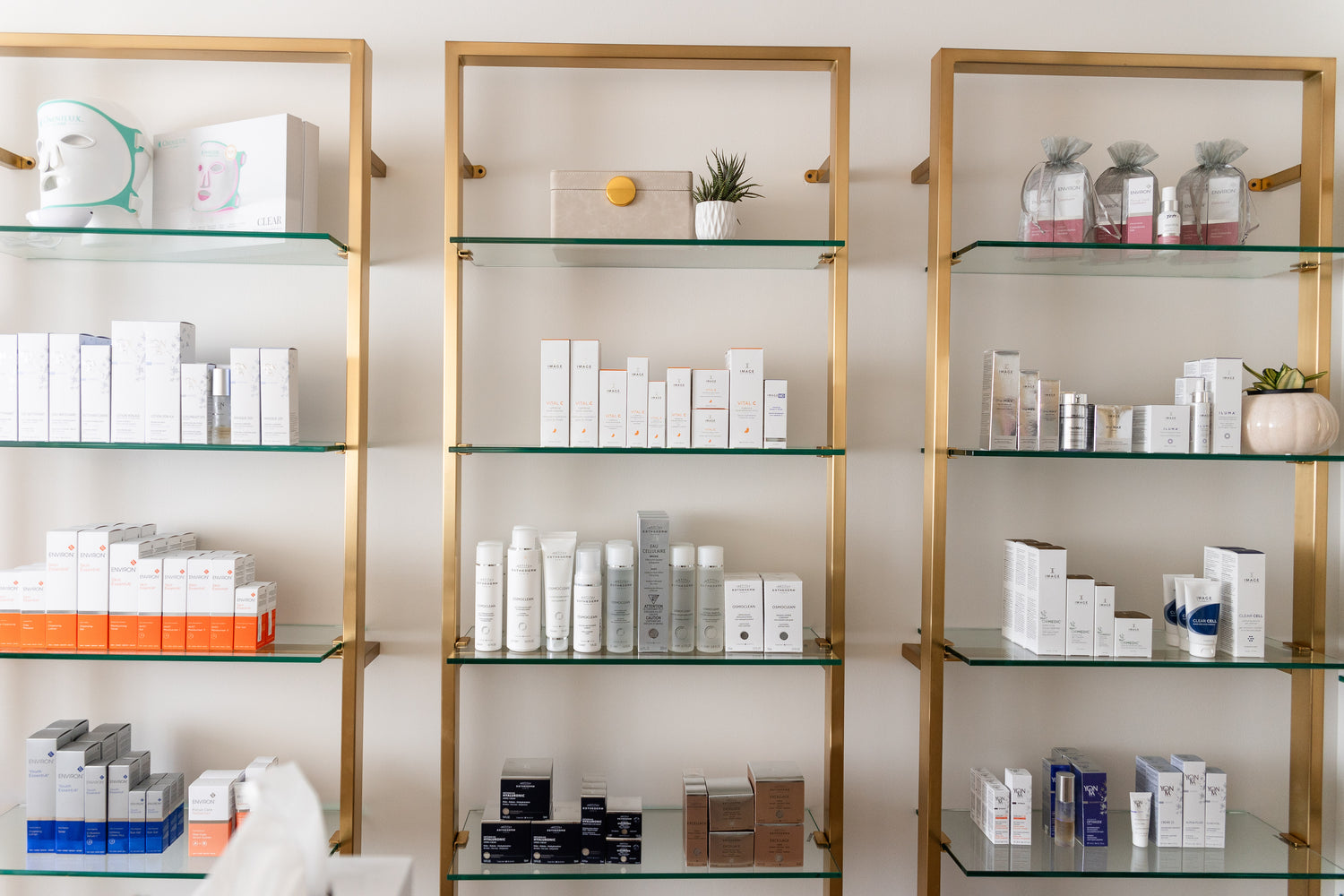If you've spent any time researching skincare, you've undoubtedly come across the terms "collagen" and "elastin." But what exactly are these powerhouse proteins, and why do they deserve so much attention in the world of skin health? I'm frequently asked about collagen and elastin—what they do, why we lose them, and most importantly, how we can support our body's natural production of these essential proteins. Let's dive into everything you need to know.
What Are Collagen and Elastin?
Collagen is the most abundant protein in the human body, making up approximately 30% of our body's total protein content. Think of it as the scaffolding (or foundation) that holds our skin together—it's a structural protein that provides firmness, strength, and structure to our skin, bones, tendons, and connective tissues.
Elastin, while less abundant than collagen, is another structural and equally crucial protein for youthful skin. It acts like a spring or rubber band, allowing your skin to stretch and bounce back to its original shape. Elastin gives skin its "snap-back" quality and resilience.
Why Are Collagen & Elastin Important for Skin Health?
In our skin specifically, collagen fibers form a dense network in the dermis (the deeper layer of skin), while elastin fibers weave throughout this network, providing flexibility and recoil. Together, they work in tandem with hyaluronic acid (which provides hydration) to keep skin looking youthful, firm, and supple.
When collagen and elastin levels are optimal (and when the existing network is healthy and structurally sound), skin appears lifted, radiant, and resilient—able to bounce back from expressions without leaving lasting lines. When the levels decline (or the existing network is not properly functioning), we see wrinkles, sagging or crepey skin, along with uneven texture.
Why/How Do We Lose or Damage Collagen & Elastin?
- Natural Aging - starting in our mid-20s, collagen production begins to slow—by about 1% each year. Elastin production peaks in our teens and essentially stops by our mid-20s.
-
Environmental Factors -
- UV radiation (sun exposure) is especially damaging for both collagen and elastin. Sun damage breaks down collagen fibers and causes a condition called solar elastosis, where elastin fibers become thickened, tangled and dysfunctional.
- Pollution and free radicals work to damage these proteins and accelerate aging.
-
Lifestyle Choices -
- Smoking - restricts blood flow & releases enzymes that directly breakdown both proteins
- Lack of Sleep - during sleep, the skin repairs and regenerates these structural proteins and lack of sleep disrupts this important process
- Stress - chronic stress elevates cortisol levels, which breakdown both of these proteins over time
-
Poor Diet - diets high in sugar and refined carbs can damage collagen and elastin through a process called glycation (causing the proteins to become stiff and malformed)
Supporting and Replacing Collagen & Elastin - A Holistic Approach
As with most skincare concerns, there is no silver bullet that will magically address such as complex issue. The best approach, in my opinion, is to implement a multi-pronged solution that works internally and externally.
1. Topical Skincare (working from the outside in)
- Vitamin A (retinoids) - the gold standard in stimulating collagen synthesis, protecting elastin fibers and speeding up cell turnover
- Peptides - signal the skin to produce more collagen or support elastin to improve firmness
- Vitamin C - a potent antioxidant essential for collagen formation and protecting elastin fibers from oxidative stress
- SPF - the most powerful collagen and elastin preserving product
2. Diet & Nutrition (working from the inside out)
- Protein-rich foods: provide adequate amino acids for collagen production
- Antioxidant-rich foods: protect existing elastin and collagen from oxidative damage; they are also essential for collagen synthesis.
- Zinc and copper-rich foods: minerals that help activate collagen-forming enzymes
- Bone broth: a whole food source of collagen and other beneficial nutrients
- Omega-3 and -6 fatty acids: healthy fats that support skin structure, reduce inflammation and help protect elastin fibers
- Collagen supplements: look for collagen peptides (hydrolyzed collagen - the most bioavailable form, easily absorbed by the body)
3. Professional Skincare Treatments & Modalities (working from the outside in)
- Professional Exfoliation - remove damaged outer layers of skin, stimulate collagen remodeling in deeper layers, while promoting a healthier extracellular matrix
- LED Light Therapy - red and near-infrared wavelengths penetrate deeply to stimulate fibroblasts (the cells that produce collagen and elastin), reduce inflammation and support skin healing
- Microneedling - creates controlled micro-injuries that trigger the skin's wound healing response, stimulating robust collagen and elastin production (yes, microneedling is one of the few treatments than can actually stimulate new elastin fiber formation!)
- Microcurrent - stimulates facial muscles and promotes cellular activity, supporting collagen production while improving facial contours
- Ultrasound - delivers focused energy to deep skin layers, triggering natural collagen production and skin tightening in areas where elastin fibers have weakened
- Radiofrequency (RF) - uses heat energy to stimulate collagen production and can actually tighten existing collagen and elastin fibers through controlled thermal injury.
- Some of these modalities can even be found in at-home tools and devices; thereby extending the professional results and benefits well beyond the treatment room!

Understanding collagen and elastin—and how to support these vital proteins—is one of the most valuable things you can do for your skin's long-term health and appearance. While we can't stop the aging process entirely or restart elastin production, we have more tools than ever to maintain resilient, youthful skin well into our later years.






